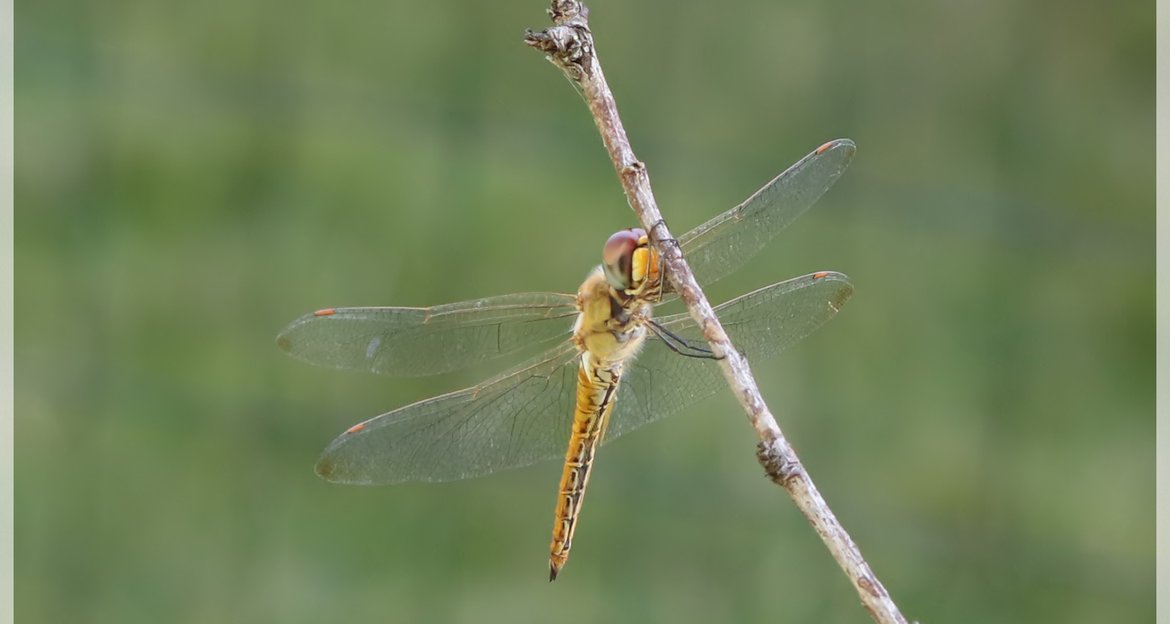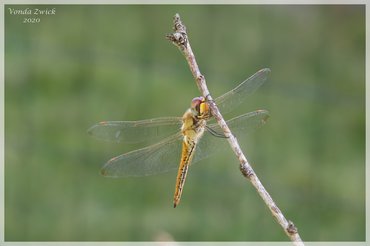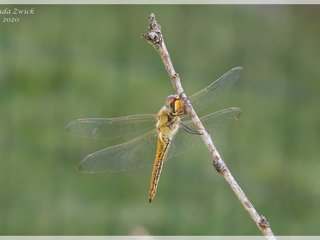Wandering Glider: A New Dragonfly Species Visiting the Garden
Posted by Vonda on July 15, 2020
Dragonflies and damselflies are some of the most exciting visitors to the gardens. Because their eggs are laid in or near water, they are often associated with pond and creek environments. But their diet is carnivore, and they will travel to where the food is, which means we get to see a nice variety over the course of the year in our backyard.
Yesterday, we had a first-time sighting of the Wandering Glider dragonfly in our backyard. My first thought from a distance was that this was a Meadowhawk, which we have attracted before. But the tan shading at the wing tips, the orange stigma (colored cell at the top edge of the wings near the tips), orange face, and the lack of telltale black markings on the abdomen (seen from another view) said otherwise. Coloration, wing shading, and stigma (along with its perching position) all are indicative of the Wandering Glider.
It is often recommended to plant native plants to attract dragonflies to control the mosquito population. It is true that planting natives will attract dragonflies. But the dragonflies themselves do not care much about plants, except for their utility as perching posts. Instead, the native plants attract the native insects (including the mosquitoes) and it is the insects that attract the dragonflies. So in effect, you attract more mosquitoes in order to attract dragonflies to eat the mosquitoes. That is not to say that the effort is useless. Planting native plants attracts diversity in the ecosystem, and when there is diversity, there is also balance. The mosquitoes are actually controlled with more balance: competition from other insects and control via natural predators including dragonflies.



